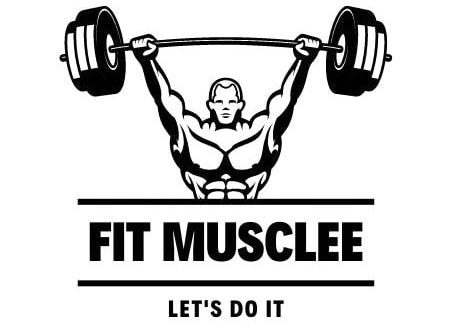Here is your complete guide to 6 month fitness program.
Introduction to 6 Month Fitness Program
Embarking on a 6 month fitness program is one of the most rewarding commitments you can make for your health and well-being. Whether your goal is to lose weight, build muscle, or simply improve your overall fitness, a structured plan can guide you toward success. In this article, we’ll explore everything you need to know about creating and following a 6 month fitness program, ensuring that you stay motivated and on track throughout your journey.
Why a 6 Month Fitness Program Commitment?
- Consistency: Six months allows enough time to develop new habits.
- Progress Tracking: A longer timeline means you can see significant changes.
- Flexibility: You can adjust your program as needed based on progress.
By the end of this article, you’ll have the tools and knowledge to create a personalized 6 month fitness program that fits your lifestyle and goals.
Setting Goals for 6 Month Fitness Program
Importance of Goal Setting
Setting clear and achievable goals is crucial for any fitness journey. Goals provide direction and motivation, helping you stay focused on what you want to achieve.
SMART Goals
To set effective goals, consider using the SMART criteria:
- Specific: Clearly define what you want to achieve.
- Measurable: Quantify your progress.
- Achievable: Ensure your goals are realistic.
- Relevant: Align your goals with your overall fitness objectives.
- Time-bound: Set deadlines for achieving your goals.
Types of Goals
Your goals may vary based on personal preferences and aspirations. Here are some common types:
- Weight Loss: Aim for a specific number of pounds or body fat percentage.
- Muscle Gain: Focus on increasing strength or muscle mass.
- Endurance Improvement: Set targets for running distances or times.
Tracking Progress
Monitoring your progress is essential for staying motivated. Consider using:
- Fitness apps (e.g., MyFitnessPal, Fitbit)
- Journals or planners
- Regular assessments (e.g., body measurements, fitness tests)
Designing Your 6 Month Fitness Program
Components of a Balanced Fitness Program
A well-rounded 6 month fitness program should include various components to ensure comprehensive development.
Strength Training
Strength training is vital for building muscle and boosting metabolism. Aim for at least two to three sessions per week.
Sample Exercises:
| Exercise | Sets | Reps |
|---|---|---|
| Squats | 3 | 8-12 |
| Push-ups | 3 | 8-12 |
| Deadlifts | 3 | 8-12 |
| Dumbbell Rows | 3 | 8-12 |
Cardiovascular Training for 6 Month Fitness Program
Cardio workouts improve heart health and burn calories. Incorporate both high-intensity interval training (HIIT) and steady-state cardio into your routine.
Sample Workouts:
| Type | Duration | Frequency |
|---|---|---|
| HIIT | 20-30 min | 2x per week |
| Steady-State | 30-60 min | 2x per week |
Flexibility and Mobility for 6 Month Fitness Program
Flexibility training helps prevent injuries and enhances performance. Include stretching routines or yoga sessions at least twice a week.
Recommended Stretches:
| Stretch | Duration |
|---|---|
| Hamstring Stretch | 30 sec |
| Quadriceps Stretch | 30 sec |
| Shoulder Stretch | 30 sec |
Nutrition for Success for 6 Month Fitness Program
Role of Nutrition in Fitness
Nutrition plays a crucial role in supporting your fitness journey. A balanced diet fuels workouts and aids recovery.
Macronutrients Overview for 6 Month Fitness Program
Understanding macronutrients is key to effective meal planning:
- Proteins: Essential for muscle repair and growth.
- Carbohydrates: Provide energy for workouts.
- Fats: Support hormone production and overall health.
Meal Planning for 6 Month Fitness Program
Creating a meal plan tailored to your goals can streamline your nutrition. Here’s a sample meal plan for weight loss:
| Meal | Food Options |
|---|---|
| Breakfast | Oatmeal with berries |
| Snack | Greek yogurt with honey |
| Lunch | Grilled chicken salad |
| Snack | Almonds or a protein shake |
| Dinner | Baked salmon with quinoa and veggies |
Hydration for 6 Month Fitness Program
Staying hydrated is vital for optimal performance. Aim for at least eight glasses of water daily, adjusting based on activity level.
Overcoming Challenges
Common Obstacles
Every fitness journey comes with its challenges. Here are some common obstacles you might face:
- Lack of Motivation: It’s easy to lose enthusiasm over time.
- Time Management Issues: Busy schedules can hinder workout consistency.
- Plateaus: Progress may stall after initial gains.
Strategies to Stay on Track
Here are some actionable tips to overcome these challenges:
- Set Mini Goals: Break larger goals into smaller, manageable milestones.
- Schedule Workouts: Treat them like appointments that cannot be missed.
- Find a Workout Buddy: Partnering with someone can enhance accountability.
Best Tips for a 6 Month Fitness Program
Set Clear and Achievable Goals
- Define Your Objectives: Identify what you want to achieve, whether it’s weight loss, muscle gain, or improved endurance.
- Use SMART Criteria: Make your goals Specific, Measurable, Achievable, Relevant, and Time-bound.
Create a Structured Plan
- Weekly Workout Schedule: Design a balanced routine that includes strength training, cardio, and flexibility exercises.
- Nutrition Plan: Incorporate a meal plan that aligns with your fitness goals, focusing on whole foods and proper hydration.
Stay Consistent
- Regular Workouts: Aim for at least 150 minutes of moderate-intensity exercise weekly, along with two days of strength training.
- Track Your Progress: Use fitness apps or journals to monitor your workouts and dietary habits.
Prioritize Recovery
- Rest Days: Schedule at least one or two rest days per week to allow your muscles to recover.
- Sleep: Ensure you get 7-9 hours of quality sleep each night for optimal recovery and performance.
Focus on Proper Technique
- Learn Correct Form: Take time to learn the proper form for each exercise to prevent injuries.
- Start with Lighter Weights: Gradually increase the weight as you become more comfortable with the movements.
Best Supplements for a 6 Month Fitness Program
Whey Protein
Whey protein is one of the most popular supplements for muscle recovery and growth. It provides essential amino acids that help repair and build muscle tissue after workouts.
- Benefits:
- Supports muscle recovery post-exercise.
- Helps in muscle protein synthesis.
- Convenient source of high-quality protein.
- Recommended Dosage: Aim for at least 20 grams per serving, ideally consumed within 30 minutes after your workout.
Creatine Monohydrate
Creatine is extensively researched and recognized for its ability to enhance strength, power, and muscle mass. It works by increasing the availability of ATP, the energy currency of cells, during high-intensity activities.
- Benefits:
- Improves strength and power output.
- Aids in muscle recovery.
- Safe for long-term use.
- Recommended Dosage: Start with a loading phase of 20 grams per day for the first week, followed by a maintenance dose of 3 to 5 grams daily.
Caffeine
Caffeine is a well-known stimulant that can enhance performance by increasing energy levels and focus during workouts. It can also help improve endurance and reduce perceived exertion.
- Benefits:
- Boosts energy levels.
- Enhances workout performance.
- Improves focus and concentration.
- Recommended Dosage: A typical pre-workout dose is around 200 milligrams, with a maximum daily limit of 400 milligrams for healthy adults.
L-Citrulline
L-citrulline is an amino acid that boosts blood flow and nutrient delivery to muscles, which can enhance performance and recovery.
- Benefits:
- Increases blood flow and oxygen delivery to muscles.
- Reduces muscle soreness post-exercise.
- Supports endurance during workouts.
- Recommended Dosage: Up to 10 grams taken about an hour before exercise.
Beta-Alanine
Beta-alanine is an amino acid that helps produce carnosine, which buffers acid in muscles during high-intensity exercise. This can help delay fatigue and improve performance.
- Benefits:
- Increases exercise capacity.
- Reduces fatigue during high-intensity workouts.
- Recommended Dosage: Between 4 to 6 grams daily, taken consistently over time for optimal results.
Common Mistakes to Avoid When Following a 6 Month Fitness Program
Skipping Warm-ups and Cool-downs
- Importance of Warm-ups: Warming up prepares your muscles for exercise, reducing the risk of injury.
- Cool-down Benefits: Cooling down helps your body return to its resting state and reduces muscle soreness.
Setting Unrealistic Goals
- Avoid Quick Fix Mentality: Setting overly ambitious goals can lead to disappointment. Aim for gradual progress instead.
Neglecting Nutrition
- Balanced Diet: Focus on a diet rich in proteins, healthy fats, and complex carbohydrates to fuel your workouts.
- Hydration: Drink plenty of water before, during, and after workouts.
Overtraining
- Listen to Your Body: Recognize signs of fatigue or burnout. Overtraining can lead to injuries and setbacks.
Inconsistent Workouts
- Stick to Your Schedule: Sporadic workouts can hinder progress. Aim for consistency in your routine.
Improper Form and Technique
- Seek Professional Guidance: If unsure about your form, consider working with a personal trainer to learn the correct techniques.
Changing Workouts Too Frequently
- Stick to Your Program: Avoid the temptation to constantly switch exercises. Consistency is key for progress.
By following these tips and avoiding common mistakes, you can maximize the effectiveness of your 6 month fitness program and achieve your fitness goals successfully.
Read Also: Glute Focused Leg Day.
FAQs about the 6 Month Fitness Program
What should I expect in the first month?
In the first month, focus on establishing a routine. Expect initial soreness as your body adapts but also increased energy levels as you become more active.
Read Also: Glute Hyperextension at Home.
How do I adjust my program if I miss workouts?
If you miss workouts, don’t stress! Simply reschedule them within the week or adjust your weekly plan to accommodate missed sessions without overtraining.
Read Also: How Long Does a Glute Pump Last?
Can I follow this program at home?
Absolutely! Many exercises can be performed at home with minimal equipment. Bodyweight exercises are an excellent option if gym access is limited.
Read Also: CrossFit Strength Training Program.
What if I have specific dietary restrictions?
Consulting with a nutritionist can help tailor meal plans that accommodate dietary restrictions while still meeting nutritional needs.
Read Also: 12 Week Kettlebell Program.
Conclusion
Committing to a 6 month fitness program can lead to transformative changes in both body and mind. By setting clear goals, designing a balanced workout regimen, prioritizing nutrition, and overcoming challenges, you’ll be well-equipped for success.
Read Also: Foods That Increases Hemoglobin.
Now is the time to take action! Start planning your own 6 month fitness program today, and watch as you achieve the results you’ve always wanted! This comprehensive guide provides everything you need to embark on your 6 month fitness program. Remember, consistency is key, so stay dedicated, track your progress, and enjoy the journey!
Read Also: 4 Week Calisthenics Program.

